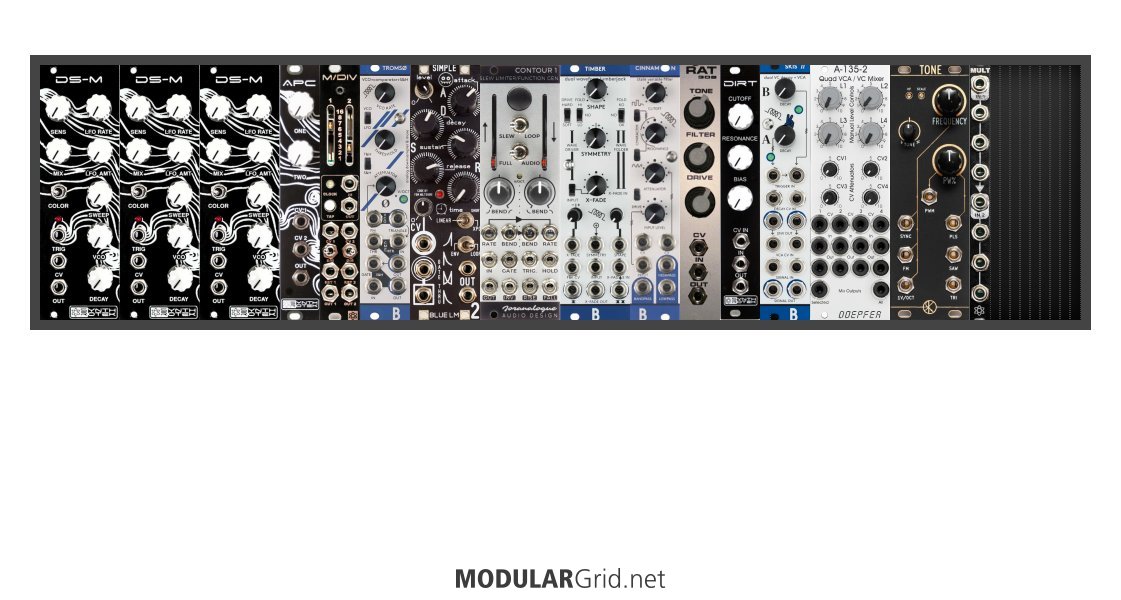First of all, this ModularGrid module builder is great! thank you, i wish i saw it a month ago haha.
Right now, technical people would call my style 'industrial hip hop', sort of like technoanimal i guess but better. Maybe some days more Funk than others. Anything near experimental or ambient tends to be dub reggae like King Tubby or Lee Scratch. If i feel like turning up the BPM, it's jungle-ish with maybe a Gangstarr sample. Heavy Drums, Heavy Bass, add in a catchy melody with some accents, samples, etc, that's my style since the 90s.
I own the following external devices for reference:
-NI Maschine....a bunch of Volcas.......a bunch of Pocket Operators....a Drumbrute Impact.....a Microgranny, Thyme, Kastle, 60 Knobs, and Trinity modules....an LXR Drum Machine.....miscellaneous digital rackmount effects....a Monologue......four turn tables and a microphone.....and a BEATSTEP PRO.
What i'm trying to do is expand my sound repertoire for more Industrial Hip Hop. I prefer to call it Digital Hard Hop but whatever. Any modular rack system is incorporated to my toolkit above, i'm looking for sounds the others don't offer.
Here's the modules i have already purchased(most purchased in kit form still need assembly):
RACK............108 HP ghetto rack
DRUMS.......Qty 3 Synthrotek DS-M drum modules (bassdrum, snare, hihats)
VCO.............Atari Punk Console (square wave, it was cheap)
VCO.............Rat King Modular - TONE - (triangle, saw, pulse, AS3340 chip)
VCO/LFO....Bastl Tromso (triangle, LFO, sample and hold, distortion)
ADSR...........Blue Lantern ADSR (linear and exponential, loop mode)
FUNC GEN...Joranalogue Contour 1 (env generator, LFO, VCO, everyone else has Maths)
FOLDER.......Bastl Timber(wavefolder, VCA, feedback, overdrive)
FILTER.........Bastl Cinnamon (hp,bp,lp, can be used as oscillator)
FILTER.........Synthrotek 308 Distortion
FILTER.........Synthrotek Dirt Filter (sounded cool, supposed to be effects filter, low pass)
SEQUENCER... Division 6 Business Card Sequencer (may use BEATSTEP PRO instead)
Last thing i think i need is VCAs. Was looking to buy the following:
VCA .............Doepfer A-135-2 (Quad VCA and MIXER but not exponential(!))
VCA.............Bastl SKIS II (VCA, Env generator, but also linear)
Is there FUNCTIONAL aspect of SYNTHESIS that i am MISSING here?
Do i really need exponential VCA's? If i buy the two listed above, i have 10HP left.
Any recommendations?
Thanks guys! hate to be anther NOOB haha.
TomM

